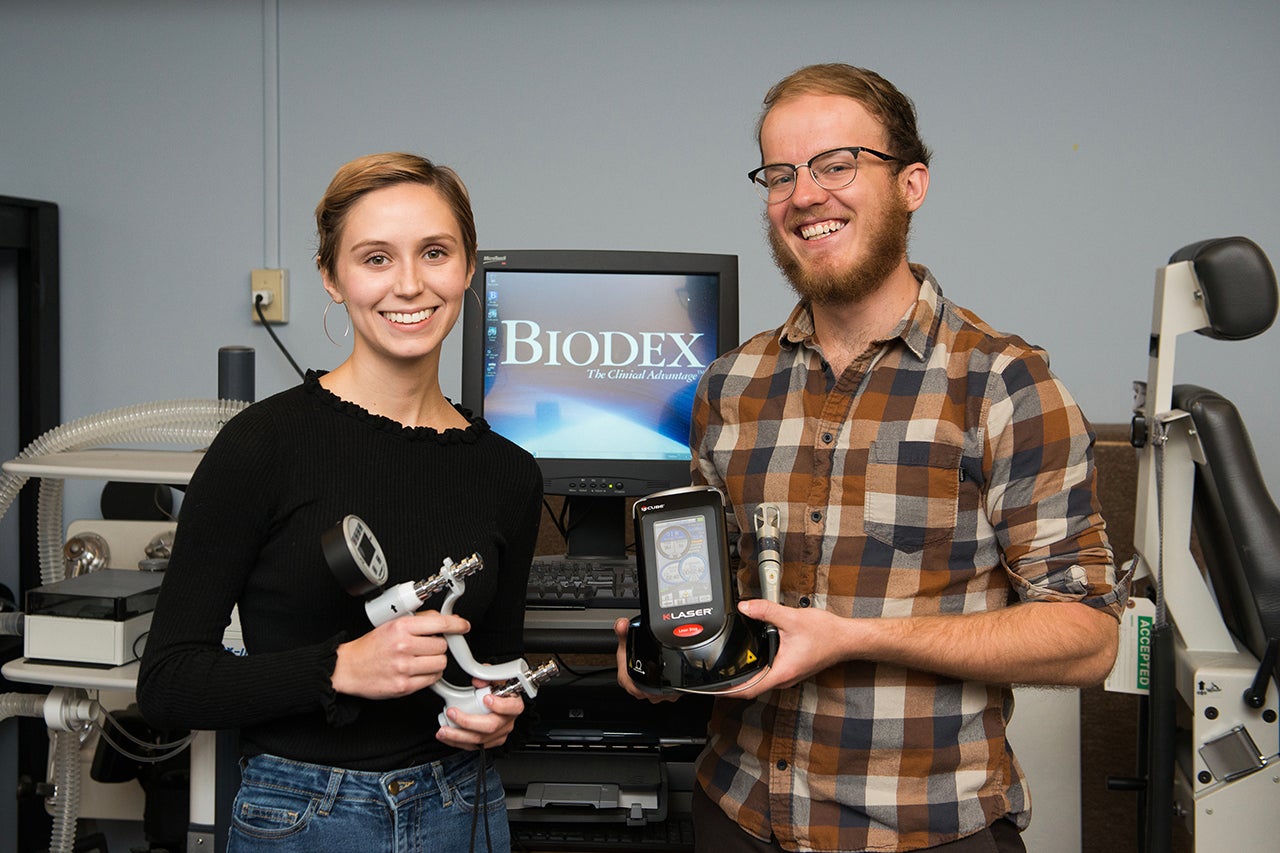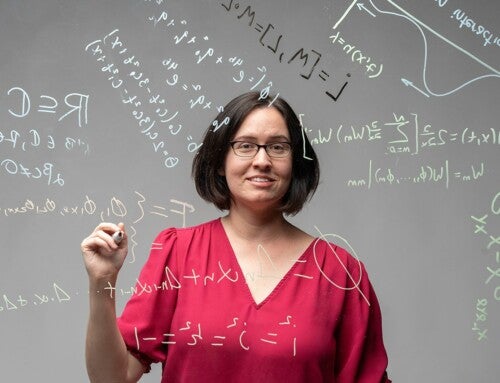Two heads are better than one. Or so the saying goes. And that maxim is especially true when it comes to interdisciplinary research, too.
At least that’s been the case for exercise science professor Wes Dudgeon and physics professor Linda Jones. These two have been collaborating on a multi-year study in which they’re examining the impact of near-infrared laser light on muscle tissue. Now, with the help of two student research assistants, Carson Keeter, a senior majoring in exercise science, and Linsey Passarella, a senior majoring in physics, Dudgeon and Jones are on the verge of publishing some important findings.
“Lasers have been used in rehabilitation therapy for decades,” says Dudgeon, who specializes in exercise physiology. “Essentially, different wavelengths of light affect our body’s tissues differently, so that’s what we’ve been studying. Of course, researchers and physical therapists have been applying different wavelengths of light to patients and subjects for years. They customarily apply the light before or after exercise. Our study is unique in that we’re examining the effect these different frequencies have on muscle tissue while our subjects are exercising.”

Research involving laser therapy suggests that using multiple wavelengths on active subjects can better treat muscle fatigue.
Both Dudgeon and Jones say that distinction – the application of near-infrared laser light on active test subjects – is important.
“Any time a muscle moves, ATP (adenosine triphosphate) is used,” Dudgeon explains. “That’s the only fuel that our muscles can use to contract. So our bodies convert energy from food (carbs, proteins and fats) into ATP in various complex processes. One of those – aerobic respiration – requires oxygen. The theory is, if you have more oxygen available, your body can make more ATP. We know that one of the wavelengths we’re studying causes oxygen to disassociate from hemoglobin (hemoglobin moves oxygen around the body), while the other wavelength stimulates portions of the mitochondria (the part of the cell that uses oxygen in a process that makes ATP). Theoretically then, laser treatments with those particular wavelengths could be beneficial in allowing the person to exercise longer before their muscles fatigue.”
At its peak last year, the study involved nearly 40 undergraduates from the College squeezing a handgrip device as the researchers sent various wavelengths of light from a laser into the subjects’ forearms. More recently, the study has been focused on larger muscles, specifically the biceps. Because of this, Dudgeon, Jones and their research assistants are using a machine that precisely regulates the motion and exertion of various muscles.
Keeter, who will be pursuing a master’s in kinesiology at the University of Wyoming in the fall, and Passarella, who will be pursuing a Ph.D. in data science at the University of Tennessee after graduation, both began working on this project last summer. Their participation in this project was funded by the Office of Undergraduate Research and Creative Activities (in Passarella’s case), and by the College’s HHMI grant (in Keeter’s case). Since then, these two have essentially taken over the reins.
“We have a lot of autonomy, and most days it’s just Linsey and myself in the lab with our subjects,” says Keeter.
Passarella explains that their findings have big implications for treating muscle fatigue.
“We found that most other researchers use two specific wavelengths of light, and they use them separately,” she says. “But we’ve experimented with using those two at the same time and the results have been encouraging. The big thing is that we’re able to look at the relationship between how hemoglobin is being affected and how specific enzymes in the tissue are absorbing the light. It seems clear that the combination of wavelengths is working better as a therapy than just the two separately.”
So where will this study lead?
“Perhaps the most important aspect of all this is the potential application for this technology,” says Dudgeon. “The most significant one is enhanced rehabilitation. If you’re looking at someone who is coming off an injury or a disease and trying to rehabilitate a given muscle more quickly, the more work that person can do, the more gains they will derive. For cancer patients in recovery or someone recovering from an operation, this technology could truly be a game changer.”
Featured image: Research assistants Linsey Passarella and Carson Keeter are both headed to graduate school programs in their area of specialty. (Photos by Reese Moore)




